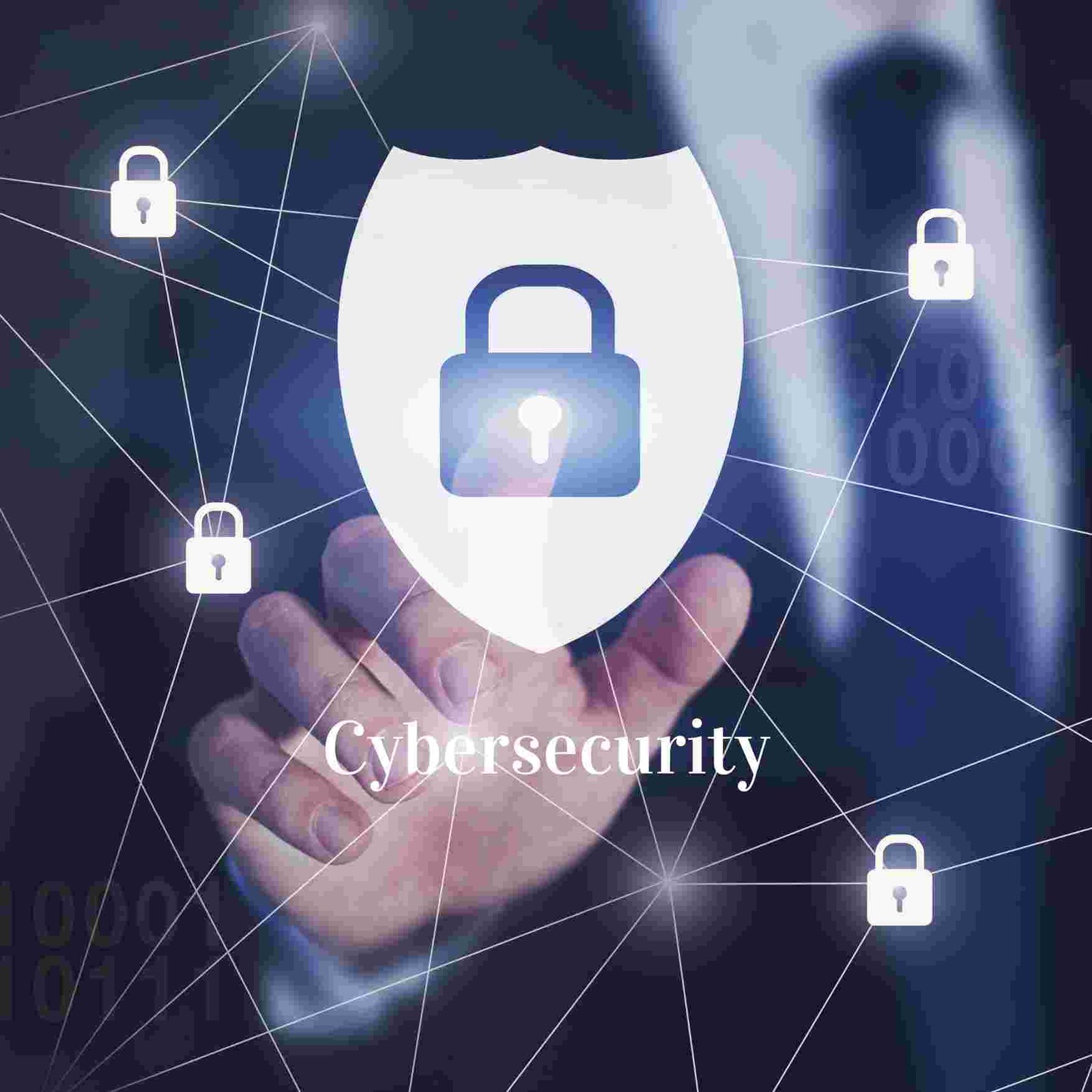Table of Contents
Introduction
The internet has become an integral part of our daily lives, revolutionizing the way we communicate, shop, work, and entertain ourselves. But with the convenience it offers, there’s a downside—cyber threats are at an all-time high. As hackers and cybercriminals become more sophisticated, it’s crucial to arm yourself with the knowledge and tools to protect your digital footprint. In this guide, we’ll dive deep into essential tips to overcome online vulnerabilities and master the art of cybersecurity.
Understanding Cybersecurity
What is Cybersecurity?
Cybersecurity refers to the practice of protecting systems, networks, and data from cyber threats such as hacking, malware, and unauthorized access. It involves various technologies, methods, and practices aimed at protecting digital assets.
Why Cybersecurity Is Critical for Individuals and Organizations
Whether you’re a tech-savvy professional or someone who uses the internet to browse social media, cybersecurity is essential. A single breach can lead to identity theft, financial loss, and irreversible damage to personal and professional reputations.
A lack of proper security measures can result in legal consequences, loss of customer trust, and significant financial setbacks for organizations.
Common Online Vulnerabilities
1. Phishing Attacks
Phishing attacks trick individuals into revealing sensitive information, such as passwords and credit card details, by posing as legitimate entities. These scams often come through deceptive emails or messages.
2. Malware and Ransomware
Malware is malicious software designed to damage or gain unauthorized access to your system. Ransomware, a type of malware, locks your data until you pay a ransom.
3. Password Breaches
Weak and reused passwords are a goldmine for hackers. Password breaches can give cybercriminals access to your accounts and sensitive data.
4. Social Engineering Attacks
These attacks take advantage of human behavior instead of technical weaknesses. Cybercriminals manipulate individuals into giving up personal information or access credentials.
5. Network Vulnerabilities
Unsecured networks can be a gateway for hackers. Public Wi-Fi networks, in particular, pose significant risks as they can be easily intercepted.
How Cyber Threats Evolve
Cybercrime is constantly evolving as technology advances. Let’s look at some of the factors driving these changes.
Advancements in Hacking Techniques
Hackers are becoming more skilled at bypassing security measures. The threats are becoming more complex, ranging from exploiting zero-day vulnerabilities to launching sophisticated DDoS attacks.
The Role of Artificial Intelligence in Cybercrime
AI is not just a defence tool; cybercriminals are also using it to automate attacks and more efficiently identify vulnerabilities.
The Future Landscape of Cybersecurity Threats
As we move toward a more connected world with the rise of IoT devices, the cybersecurity landscape will become even more challenging. Staying updated and proactive is essential.
Key Cybersecurity Best Practices
1. Use Strong and Unique Passwords
Creating complex passwords that are at least 12 characters long and include a mix of letters, numbers, and special characters can significantly reduce the risk of breaches.
2. Enable Two-Factor Authentication (2FA)
Two-factor authentication enhances security by requiring a second verification step, like a code sent to your phone.
3. Regular Software Updates
Keeping your operating system and applications up to date is crucial for patching security vulnerabilities.
4. Secure Browsing Habits
Avoid clicking on suspicious links and only browse secure websites with HTTPS encryption.
5. Data Encryption
Encrypting sensitive data ensures that even if it’s intercepted, it cannot be easily read.
The Importance of Cyber Hygiene
What Is Cyber Hygiene?
Cyber hygiene refers to the routine practices and steps that individuals and organizations take to maintain the health and security of their digital assets.
Essential Steps to Maintain Good Cyber Hygiene
- Regularly updating passwords
- Clearing browser history and cookies
- Deleting unused accounts
- Running regular security scans
Tips for Protecting Personal Information Online
1. Manage Social Media Privacy Settings
Review your social media privacy settings to control who can see your posts and personal information.
2. Avoid Oversharing Personal Details
Reduce the personal information you share online. This information can be used for identity theft or social engineering attacks.
3. Use Secure Payment Methods for Online Transactions
Credit cards and secure payment gateways offer better protection against fraud than debit cards or direct transfers.
Securing Devices and Networks
1. Protecting Home Wi-Fi Networks
Your home Wi-Fi network is the backbone of all your internet-connected devices. Leaving it unsecured invites hackers to access your data.
Tips to Secure Your Wi-Fi Network:
- Use a strong, unique password for your Wi-Fi router.
- Change the default admin credentials on your router.
- Enable WPA3 encryption for better security.
- Regularly update the router firmware.
- Turn off remote access when not needed.
2. Mobile Device Security Practices
Mobile phones are often more vulnerable than computers due to their constant connectivity and widespread app usage.
Best Practices to Protect Mobile Devices:
- Set up biometric security or a strong passcode.
- Download apps only from trusted sources like Google Play or the Apple App Store.
- Be cautious of app permissions—only grant those necessary for functionality.
- Regularly update the operating system and apps.
- Enable remote tracking and wiping features in case of theft.
3. Safeguarding IoT (Internet of Things) Devices
Smart home devices, such as cameras and voice assistants, are convenient but can be vulnerable to cyber threats.
Steps to Secure IoT Devices:
- Change default passwords immediately after setup.
- Keep the firmware updated.
- Connect IoT devices to a separate guest network.
- Regularly review device permissions.
Recognizing Phishing and Social Engineering Tactics
1. How to Identify Phishing Emails and Messages
Phishing emails and messages often have subtle red flags that can give them away.
Common Signs of Phishing:
- Generic greetings like “Dear Customer.”
- Spelling and grammar errors
- Suspicious links or attachments
- Urgent requests for sensitive information
- Sender email addresses that don’t match official domains
2. Real-Life Examples of Social Engineering Attacks
- Tech Support Scams: Fraudsters posing as support agents to gain remote access to your device.
- CEO Fraud: Impersonating a high-ranking executive to trick employees into transferring funds.
- Tailgating: Physically following an authorized person into a secure area without permission.
3. Tips to Avoid Falling Victim
- Verify unexpected requests by contacting the source directly.
- Never share sensitive information over the phone or email unless you’re certain of the recipient.
- Use anti-phishing filters in your email client.
The Role of Firewalls and Antivirus Software
1. Importance of Using Firewalls
A firewall serves as a security barrier, regulating and overseeing network traffic flow.
Benefits of Firewalls:
- Blocks unauthorized access
- Protects against malware
- Monitors suspicious activities
2. How Antivirus Programs Help Mitigate Threats
Antivirus software identifies and eliminates harmful programs from your system.
Key Features to Look for in Antivirus Software:
- Real-time scanning
- Malware protection
- Email security features
- Regular updates
3. Recommended Software Options
- Norton Antivirus
- Bitdefender
- McAfee
- Avast Security
Backup Strategies for Data Protection
1. Best Practices for Data Backups
Regular backups are essential for safeguarding your data from accidental loss or cyberattacks.
Backup Tips:
- Follow the 3-2-1 backup rule: three copies of data, two different storage types, and one offsite backup.
- Automate backups to avoid human error.
- Encrypt sensitive data in backups.
2. Cloud Storage vs. Physical Backups
- Cloud Storage: Accessible anywhere but dependent on internet connectivity.
- Physical Backups: Provides full control but can be lost or damaged.
3. Recovery Planning After Data Breaches
- Identify the extent of the breach.
- Restore data from backups.
- Notify affected parties if necessary.
- Conduct a post-breach analysis to strengthen security measures.
Protecting Children and Family Members Online
1. Setting Parental Controls
Parental controls can limit what children can access on the internet and set screen time restrictions.
Features to Look for in Parental Control Tools:
- Website Filtering
- App usage monitoring
- Time management settings
- Location tracking
2. Educating Children About Online Safety
Children are often the most vulnerable targets online.
Essential Online Safety Tips for Kids:
- Never share personal information online.
- Avoid clicking on unknown links or ads.
- Report any suspicious messages or content to a trusted adult.
3. Monitoring Digital Activities
Review your family’s online activity regularly to identify potential threats or inappropriate content. Communication is key—maintain open discussions about online experiences.
Business Cybersecurity: Safeguarding Corporate Data
1. Employee Training Programs
Individual mistakes are a major cause of data breaches. Therefore, it is essential to train employees on cybersecurity best practices.
Training Focus Areas:
- Recognizing phishing attempts
- Secure password practices
- Reporting security incidents
- Device security protocols
2. Role of Cybersecurity Insurance
Cybersecurity insurance offers financial coverage in case of a data breach or cyberattack.
Coverage Options Include:
- Data recovery costs
- Legal expenses
- Notification services for affected customers
- Financial loss reimbursement
3. Strategies for Securing Company Networks
- Use Virtual Private Networks (VPNs) for remote employees.
- Implement multi-factor authentication for all critical systems.
- Conduct regular vulnerability assessments and penetration testing.
Incident Response Plan
1. What to Do in Case of a Cyberattack
- Immediately isolate the affected system to prevent further spread.
- Notify your IT department or a cybersecurity expert.
- Preserve evidence for forensic analysis.
2. How to Create an Effective Incident Response Plan
Key Components of an Incident Response Plan:
- Clear roles and responsibilities
- Step-by-step containment procedures
- Communication protocols
- Post-incident review process
3. Importance of Regular Simulations
Conducting mock cyberattack simulations ensures that your team is prepared and can respond efficiently in a real crisis.
Conclusion
The digital world is full of opportunities, but it’s also a breeding ground for cyber threats. Protecting yourself and your loved ones online requires vigilance, good habits, and the right tools. By following the tips in this guide, you’ll be better equipped to navigate the internet safely and confidently. Stay proactive, stay secure, and remember—cybersecurity is an ongoing journey.









